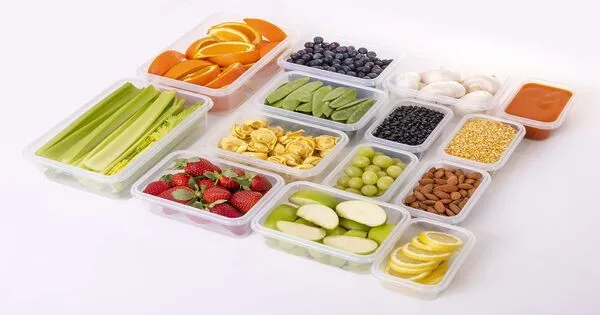Food storage is a method of reducing food supply variability in the face of natural, unavoidable variability. It allows food to be consumed for a period of time (typically weeks to months) after harvest rather than immediately. It is both a traditional domestic skill (primarily as root cellaring) and an important industrial and commercial activity in the form of food logistics.
The practice of preserving and storing food for future use is referred to as food storage. Food storage is critical for preserving food quality, preventing spoilage, and lowering the risk of foodborne illness. Here are some food storage guidelines:
- Temperature control: Most perishable foods should be stored in a cool environment, ideally between 35°F (1.7°C) and 40°F (4.4°C). Refrigerators should be set to around 40°F (4.4°C) or below, while freezers should be kept at 0°F (-18°C) or lower.
- Separation: Store different types of food separately to avoid cross-contamination. Raw meats, poultry, and seafood should be kept separate from ready-to-eat foods like fruits and vegetables. Use airtight containers or plastic bags to prevent juices from raw meat from dripping onto other foods.
- Airtight containers: For dry goods like grains, cereals, and pasta, use airtight containers to keep them fresh and protect them from pests. Mason jars, plastic containers, or resealable bags are suitable options.
- Canning and preserving: Canning and preserving methods, such as canning jars, pickling, and vacuum sealing, can extend the shelf life of fruits, vegetables, and homemade preserves. Follow safe canning practices to prevent the growth of harmful bacteria.
- First in, first out (FIFO): When organizing your pantry or refrigerator, practice the FIFO method. Place newer items at the back and older items at the front. This way, you will use the older items first and avoid waste.
- Freezing: Many foods can be kept fresher for longer by freezing them. To avoid freezer burn, wrap food tightly in moisture-proof freezer bags or containers. To ensure that you use items within a reasonable time frame, label them with the date.
- Rotation: Check your food storage areas on a regular basis and rotate items to ensure that older products are used before newer ones. This practice reduces food waste and ensures a constant supply of food.
- Storage conditions: Maintain clean, dry, and well-ventilated food storage areas. Avoid direct sunlight and high temperatures, which can hasten food spoilage. Check for pests on a regular basis and take the necessary precautions to avoid infestations.
Food preservation, storage, and transportation, including timely delivery to consumers, are critical to food security, particularly for the vast majority of people worldwide who rely on others to produce their food.
Significant food losses are caused by insufficient storage conditions as well as decisions made earlier in the supply chain that predispose products to shorter shelf life. Ample cold storage, in particular, can be critical in preventing both quantitative and qualitative food losses.
















